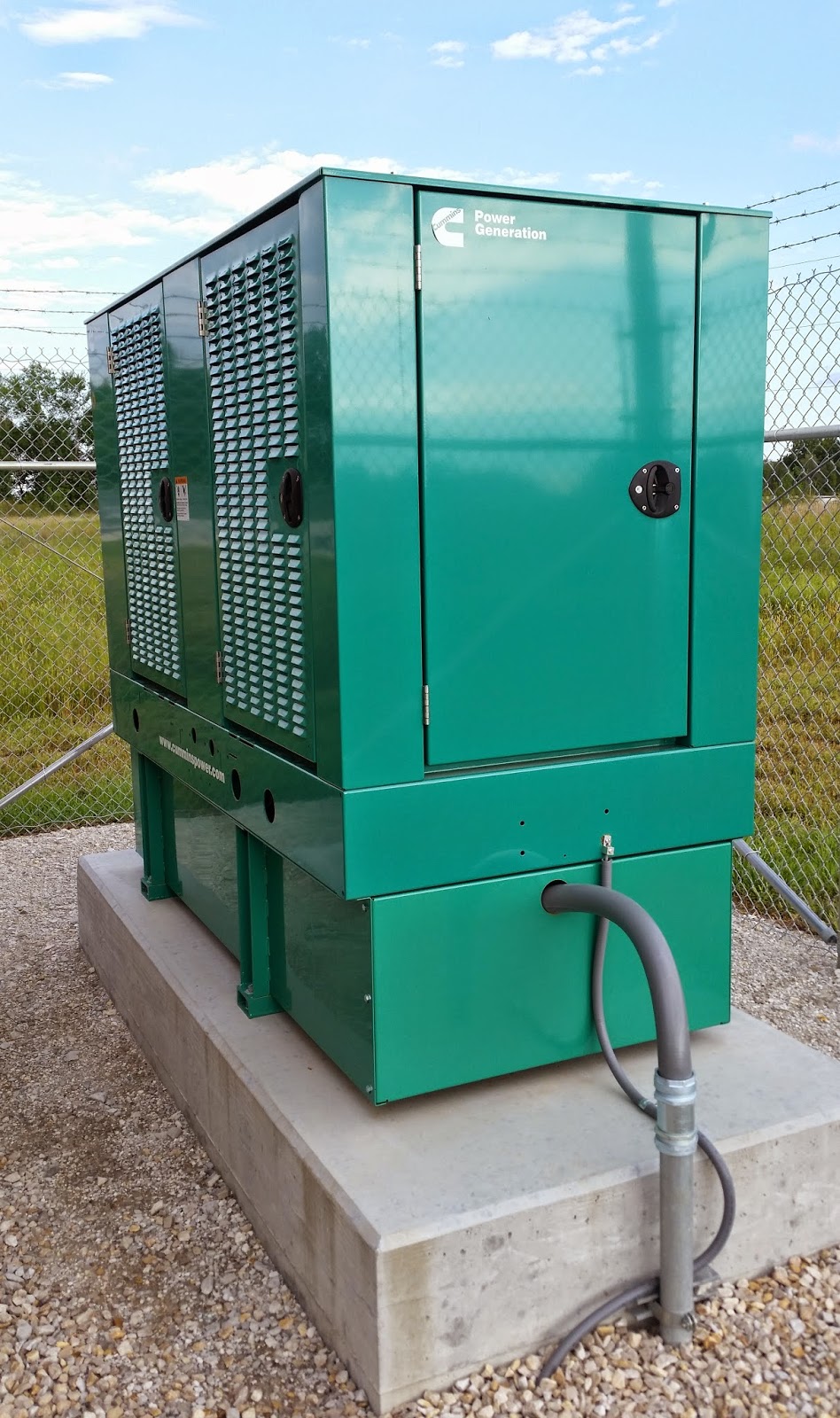I stopped by one of the first fiberhoods in Kansas scheduled for construction to check on the install progress so far. I plan to stop by again every few days and snap a couple more pictures.

Yards with utilities marked and flagged so conduit can be run.
Google had to go with underground conduit in this neighborhood since their are no utility poles to string fiber from. Most houses had a single piece of thinner conduit coming up, every few house there was two thinner conduits and one larger one.

A large underground fiber vault. Labeled "Communications."

A better view of another large fiber vault.
A small fiber vault.
Two sections that need to be spliced and conduit to feed a neighborhood.
A better view of the conduit that will feed a neighborhood.
A fiber hut, part of the Google Fiber core network.
Updated photo of the same fiber hut. Google Fiber has added Cummins Diesel Generators to their fiber huts. It looks like it's at least a 35kW generator with a 140 gallon fuel tank underneath it. (At least some of the generators have natural gas as their fuel source.)
A closer photo of the generator.
Generator is now connected. Service should now stay up even if utility power fails for up to several days.

A large underground fiber vault. Labeled "Communications."

A better view of another large fiber vault.
A small fiber vault.
Two sections that need to be spliced and conduit to feed a neighborhood.
A better view of the conduit that will feed a neighborhood.
A fiber hut, part of the Google Fiber core network.
Updated photo of the same fiber hut. Google Fiber has added Cummins Diesel Generators to their fiber huts. It looks like it's at least a 35kW generator with a 140 gallon fuel tank underneath it. (At least some of the generators have natural gas as their fuel source.)
A closer photo of the generator.
Generator is now connected. Service should now stay up even if utility power fails for up to several days.













